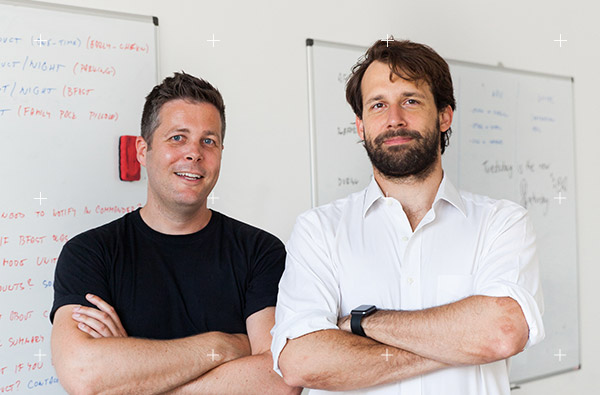Table of contents
Richard and I met each other 6 years ago at a Czech Fashion Show, where they were presenting last season’s collection to a crowd of hipsters, bloggers and 2 misplaced hoteliers. Richard told me about his vision for a hotel he was building in the heart of Prague, and how technology was going to be a big factor in making it the most forward thinking hotel in the city.
As time went by, the hotel construction progressed, and certain decisions were made to facilitate the vision of making the hotel more like a home than a hotel, and purposely it was built without a reception area to create a true feeling of home. Guests would be welcomed at the door by hosts carrying iPads, who would check-in guests from the comfort of the living room. Guests could communicate and order services through customized apps, and have curated city guides to experience the city like a local.
As the hotel came closer to its opening day, it was time to start finding the system that could cater to this customized and mobile experience. A long search ensued, with the resulting frustration and realization that no system on the market in 2012 could facilitate a true mobile experience, with integrated concierge applications, tokenized payments and automatic reservation management.
Sometimes, if you want something done right, you’ve got to do it yourself
At this point Richard convinced the hotel owner to give him the budget which would have been spent on Oracle or any other “industry leading” supplier and he would build his own guest solution. He hired a graphic designer and brought in 2 developers and started building plans to rethink guest technology.
I joined the project a few months in, having left my career at Hilton, excited by the prospect of bringing some real change to the hospitality industry. After our initial discussions it became clear that in order to rebuild hotel technology, you cannot simply build guest apps, and then integrate them into the existing infrastructure, as we learned that the “Oracles of the world” did not have great open API’s and wanted top dollar to allow us to integrate into them. The only solution remaining was to start at the basics… so we built our own cloud based Property Management System.
At least if we owned the system in the backend, we could build it with a great open infrastructure for others to connect to and at the same time learn everything about our guests, as we would be the backbone system that stores and secures all guest data. We know who our guests are, where they book from, how much they spend, where they live, why they are travelling, their e-mail address, etc. This data would allow us to cater to those guests with specific solutions.
The Real Test
The Emblem opened in September 2013, with a system that had one fifth of the functionality it should have had, it was constantly crashing and their accountants had put our heads on dart boards as none of the reports were matching up, it did not handle the multi-currency environment, could not calculate VAT over the deposits correctly, etc.
But we learned quickly, and deployed a new version almost daily with new features, fixes and new integrations. Within two months of opening we connected a channel manager with 2-way connectivity, built a connection to a payment gateway that stored credit cards, integrated into the facility management system (ensuring the rooms were at the perfect temperature as guests arrived to their rooms) and connected the restaurant system.
Can we sell this thing?
Once we were confident that the system was working properly, we had to go find our first clients, so we started walking-the-talk and learned quickly that hoteliers always wanted to know which other hoteliers had taken the plunge before them… which was hard, because no-one except for the Emblem had. So we received endless: “thanks, but come back when you have at least 20 hotels live”.
Luckily after months of presentations we had found several friends and visionary hoteliers (Thanks Monika, Luca and Nah-Dja) who were willing to take a risk and see what we could do for them.
We found a basement office on the Old Town Square in Prague, had actual clients, accountants and many more challenges to solve. We were in business.
The climb to the top
Our biggest supporter was Nah-Dja, a Dutch hotelier in Prague who was running the 350 unit Mosaic House and bought in to our vision early on. We embarked on the journey to onboard his hotel-hostel-hybrid which was 6 times the size of the Emblem with huge amounts of group business and brand new challenges to solve. As we onboarded the hotel, everything that could go wrong went wrong and after 30 hours of non-stop work, we considered pulling out as the system simply was not ready for this scale-up. Our developers however persisted and released upgrades at record speed, and 3 days in, the system stabilized and Mosaic House was live. We spent many months improving the ability to cater to hostels, as we learned quickly they were a complete different logic and configuration compared to hotels… and a market we had never even considered.
To date, Nah-Dja is still our biggest supporter, and willing to try any of our crazy ideas/apps/integrations first. The hotel is now bringing in more revenue than ever before, and over delivering in guest satisfaction. It shows that innovators may not always win, but when they do, they can win big.
Fast Forward
Today we have hotels in 18 countries, the largest property being 1200 beds, with fully automatic check-in features, and many more modern integrations that allow hoteliers to focus on creating great guest experiences rather than tedious administrative tasks.
We are excited to tell you what we have planned next… so watch this space.
Matthijs Welle – CEO

2026 Hospitality Industry Outlook
Download now
Table of contents
Hospitality hot takes straight to your inbox



.webp)
